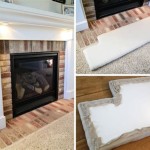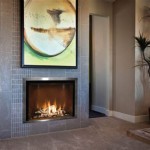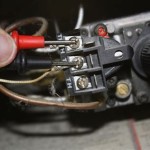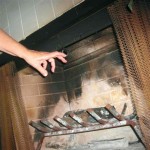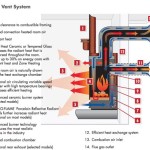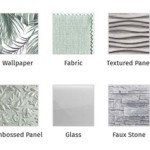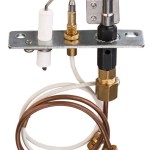Hanging a TV Above a Gas Fireplace: Considerations and Best Practices
Mounting a television above a gas fireplace presents a tempting space-saving and aesthetically pleasing solution for many homeowners. It creates a focal point and allows for comfortable viewing from various areas of the room. However, this setup involves significant considerations regarding heat, safety, and optimal viewing angles. Therefore, careful planning and execution are crucial to avoid damaging the television and ensuring a comfortable and safe viewing experience.
The allure of combining entertainment and ambiance is undeniable. A fireplace offers warmth and character, while a television provides access to a vast array of content. Merging these two elements can dramatically enhance the living space. However, the potential risks and challenges associated with placing a television above a gas fireplace must be thoroughly understood and addressed before proceeding with any installation.
Understanding the Heat Factor
The primary concern when hanging a television above a gas fireplace is the heat generated by the fireplace. Modern televisions, particularly LCD and OLED models, are sensitive to excessive heat. Prolonged exposure to high temperatures can damage the internal components, shorten the lifespan of the device, and even void the warranty. The degree of heat exposure depends on several factors, including the fireplace's design, the BTU output, the distance between the fireplace and the television, and the presence of a mantel.
Gas fireplaces produce both radiant heat (direct heat waves) and convective heat (heated air). Radiant heat travels directly from the fireplace to nearby objects, while convective heat rises upwards. This upward movement of hot air is the most significant threat to a television mounted above the fireplace. The heat can become trapped in the space between the fireplace and the television, creating a localized hot zone.
Several strategies can mitigate the heat risk. Installing a substantial mantel can deflect a significant portion of the rising heat away from the television. The larger the mantel, the more effective it is in redirecting the heat. Furthermore, choosing a fireplace with a lower BTU output can reduce the overall amount of heat produced. Properly ventilating the area around the fireplace can also help dissipate heat and prevent it from accumulating near the television. Some modern fireplaces are designed with built-in heat shields or blowers that direct heat away from the upper surfaces.
Before mounting the television, it is essential to measure the temperature above the fireplace while it is operating at its highest setting. An infrared thermometer can be used to accurately gauge the surface temperature of the wall where the television will be mounted. If the temperature exceeds the manufacturer's recommended operating temperature for the television (typically around 100-110 degrees Fahrenheit or 38-43 degrees Celsius), further heat mitigation measures are necessary. Consider consulting a professional fireplace installer or HVAC technician for advice on optimizing heat management.
Even with heat mitigation measures in place, it's prudent to monitor the television's temperature periodically after installation, especially during extended fireplace use. If signs of overheating are observed, such as screen discoloration or flickering, the television should be immediately turned off, and further investigation into the heat source should be conducted.
Addressing Safety and Structural Considerations
Beyond the heat factor, safety and structural integrity are critical considerations when mounting a television above a gas fireplace. The wall above the fireplace may not be structurally sound enough to support the weight of the television and the mounting bracket. It is crucial to identify the wall studs and use a mounting bracket that is specifically designed for the television's weight and size. Using appropriate hardware, such as lag bolts, to secure the bracket to the studs is paramount.
If the wall is constructed of brick or stone, specialized masonry anchors will be required. These anchors are designed to provide a secure hold in solid masonry materials. It is recommended to consult with a professional installer experienced in mounting televisions on brick or stone walls to ensure proper installation and avoid damaging the wall.
Wiring considerations are also essential. Power cords and HDMI cables should be routed safely and discreetly to the television. Running cables behind the wall is a common practice, but it requires careful planning and execution to avoid damaging existing wiring or plumbing within the wall cavity. Using a wire concealment kit can help manage cables and prevent them from becoming a tripping hazard.
Gas lines and electrical wiring associated with the fireplace must be carefully considered. Ensure that no wiring or gas lines are directly behind the area where the television mount will be installed. Drilling into these lines can create a dangerous situation. If there is any uncertainty about the location of these lines, it is best to consult with a qualified electrician or plumber before proceeding with the installation. It's also important to adhere to all local building codes and regulations regarding electrical and gas installations.
A properly installed television mount should be level and securely attached to the wall. Using a level during the installation process is essential to ensure that the television is positioned correctly. After the television is mounted, double-check the stability of the mount by gently applying pressure in different directions. If there is any wobble or movement, the mount may not be properly secured, and further adjustments may be needed.
Optimizing Viewing Angle and Ergonomics
The height at which the television is mounted significantly impacts the viewing experience. Mounting the television too high can lead to neck strain and discomfort, especially during extended viewing sessions. The ideal viewing height is typically considered to be when the center of the screen is at eye level when seated. However, this may not be possible when mounting a television above a fireplace, as the fireplace itself will dictate the minimum height of the television.
To compensate for a higher mounting position, consider using a tilting television mount. A tilting mount allows the viewer to angle the television downwards, improving the viewing angle and reducing neck strain. The degree of tilt required will depend on the height of the television and the distance from the seating area. Experiment with different tilt angles to find the most comfortable viewing position.
The distance between the seating area and the television also influences the optimal screen size. A larger screen may be necessary if the seating area is far from the fireplace. However, a screen that is too large can overwhelm the space and create a less comfortable viewing experience. There are online calculators and guidelines available to help determine the appropriate screen size based on viewing distance.
Consider the ambient lighting in the room. Glare from windows or other light sources can make it difficult to see the television screen. Installing blinds or curtains can help control the amount of light entering the room and reduce glare. Anti-glare screen protectors can also be used to minimize reflections.
Finally, consider the overall aesthetics of the setup. The television and the fireplace should complement each other and create a visually appealing focal point. Choose a television mount that is discreet and blends in with the surrounding decor. Conceal cables and wires to create a clean and organized look. Consider using decorative elements, such as artwork or shelving, to balance the space and create a cohesive design.
Can I Mount A Tv Over My Fireplace Heatilator

Can I Mount My Tv Above The Fireplace
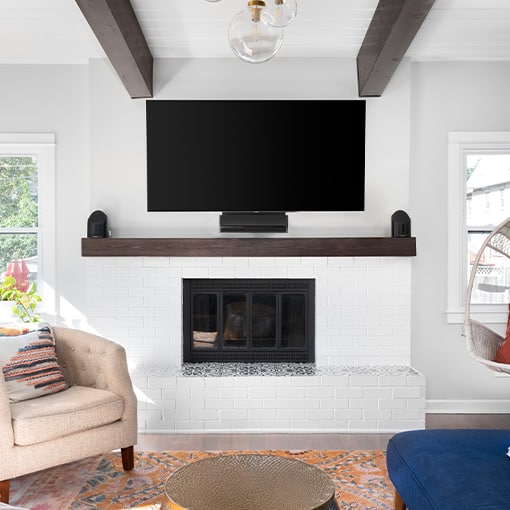
Can I Mount My Tv Above The Fireplace

Ortal S Innovative Technology Makes It Safe To Mount A Tv Above Your Fireplace

Mounting Your Tv Above Fireplace

Can I Mount A Tv Over My Fireplace Warming Trends

Can I Hang A Tv Over My Fireplace Woodlanddirect Com

Is It Safe To Mount Your Tv Above The Fireplace Chimney And Wildlife

Should I Mount A Tv Over Hole In The Wall Gas Fire Rigbys

Can You Put A Tv Over Fireplace Direct Fireplaces
Related Posts

